
Animal Project
s26431965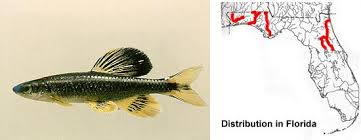
Casey Meyers - Period 6
Bluenose
Shiner
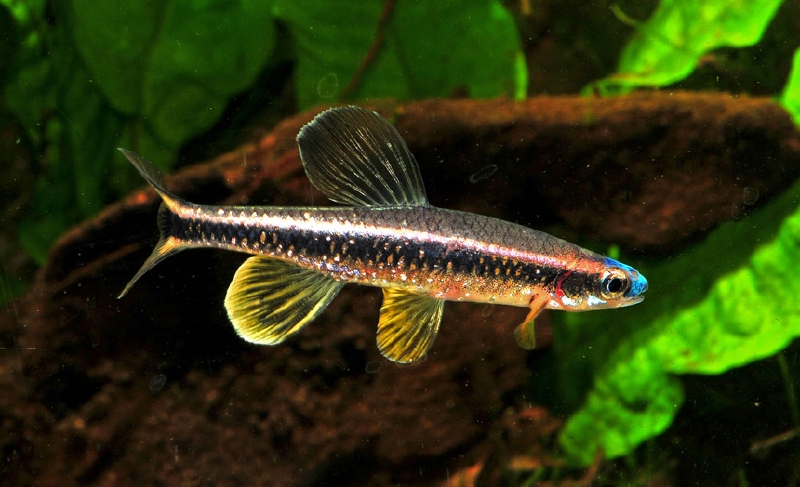
photo courtesy of Tony Terceira
common name: Bluenose Shiner
regular name: Pteronotropis welaka

The bluenose shiner was first found in the St. John’s River near the town of Welaka, Florida in 1897. They can now be found in the western panhandle of Florida and sporadically in eastern Florida. They prefer clear water in streams and pools with aquatic vegetation.
photo courtesy of Lawrence Page
what does the bluenose shiner look like?
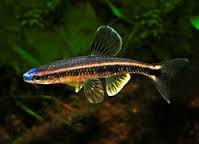
courtesy of Google Images
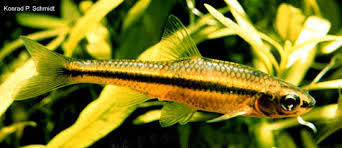
courtesy of Kosrad Schmidt
The bluenose shiner is a small fish about 1.9 inches long with a blue nose as its name suggests and a dark stripe down its back. They have large eyes and the rest of its body is olive colored with two dark-colored back fins, yellow pelvic and anal fins that both have bands of black coloring.
The most obvious features on the bluenose shiner are its blue nose and dark stripe that runs from its nose to the tail. The fish is very colorful and often you might see it in different colors. People remark how unique and beautiful their coloring is with shimmering metallic colors and that shiny blue nose. Males are more colorful than females.
The Bluenose Shiner's habitat
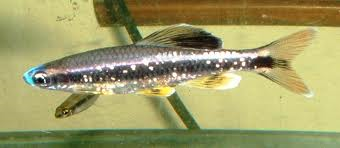
Bluenose shiners live in backwaters and river swamps and streams with vegetation. These areas are usually quiet vegetated pools of creeks or small to medium size rivers that are on sand or mud. The bluenose shiner is usually found in schools with other bluenose shiners in water about 3 to 6 feet in depth. Bluenose shiners are mostly herbivores. However they also eat eggs and fry during the spawning season, some insects, algae, and rotifers which is a microscopic water species.
courtesy of Google Images
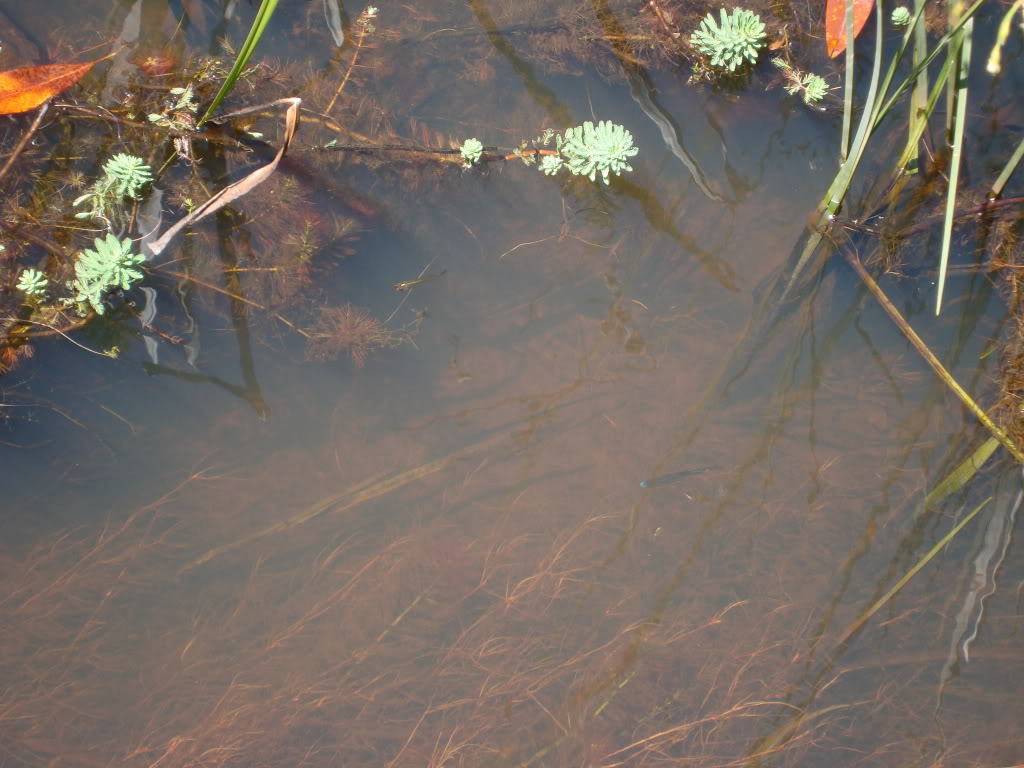
courtesy of Google Images
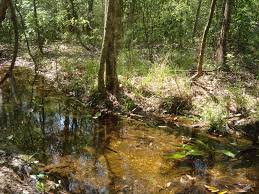
courtesy of Google Images
Interesting Facts:
How long do you think a bluenose shiner lives?
Unfortunately, most bluenose shiners live for only a couple of years.
How long is a bluenose shiner? 1.9 inches long
Where else do bluenose shiners live? Also in Georgia.
Other than its, blue nose, name another obvious feature.
stripe down its back
Are bluenose shiners mostly herbivores or omnivores?
Herbivores.

True or False:
You can keep a Bluenose Shiner as a pet in your home aquarium?
False, you may not keep an endangered species as a pet.
Bluenose Shiner have both red and blue noses. False
Little is known about the bluenose shiner's mating system. True.
Bluenose shiners like to eat algae. True.
Bluenose shiners are usually found in schools. True.
The island apple snail is a predator as it poses a threat to the Bluenose Shiner because it grazes on the native aquatic vegetation which is important to the habitat of the bluenose shiner and a source of food.
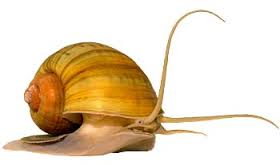
The bluenose shiner has a special relationship with the sunfish because it uses sunfish nests during spawning to deposit its eggs. However, male bluenose shiners are predators to sunfish eggs, and are known to eat sunfish eggs when the adult sunfish leaves the nest. Male bluenose shiners will also eat their own eggs, although they prefer the larger sunfish eggs.

courtesy of Google Images
Sunfish nests where bluenose shiner deposits their eggs
To survive, they travel in schools to avoid predators. They are prey to many types of other fish.
courtesy of Google Images
The bluenose shiner reproduces using dioecism which means that each male and female fish has separate reproductive organs. Breeding starts in April and increases until September when it slows down. In order to attract a female, two male bluenose shiners will circle each other with their bodies in a bow shape while at the same time showing each of their fins to the female. Spawning, which is the release of eggs occurs over sunfish nests, and usually occurs more than once in a season. Females produce about 55 to 190 eggs. Males are aggressive during the spawning and will chase away other bluenose shiners from the nest. Many male bluenose shiners stay by each nest.
During the protolarval stage the bluenose shiner develops a mouth and large round eyes and the gut area begins to darken. In the mesolarge stage the eyes get larger and coloring increases over its body and lips.
Reproduction
courtesy of Google Images
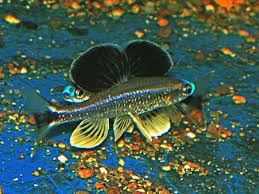
courtesy of Google Images

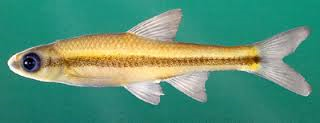
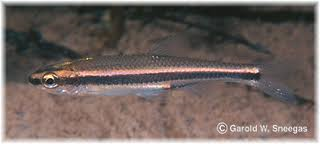
Garold W. Sneegas

courtesy of Google Images
courtesy of Google Images
The bluenose shiner niches include serving as prey to many other fish and also feed on vegetation and algae which balance the ecosystem. There is only one known bluenose shiner, and they have become rare due to residential development and land changes which have affected their habitat. When building occurs they lose needed shade causing the temperature to increase in the water. There are other types of shiners including the ironcolor shiner, the red eye chub, the taillight shiner and the Apalachee shiner.
Bibliography
Page, Lawrence. “Florida Museum of Natural History Ichthyology Department: Identification Key
to Native Freshwater Fishes of Peninsular Florida.” Florida Museum of Natural History Ichthyology Department: Identification Key to Native Freshwater Fishes of Peninsular Florida. N.p., n.d. Web. 04 Mar. 2015
Bass), (Photo Courtesy of D.g. "Bluenose Shiner." Bluenose Shiner (n.d.):103. Florida Fish and Wildlife Conservation Commission. Web.
Harrington, Z. 2011."Pteronotropis welaka" (on-line), Animal Diversity Web. Accessed March 04, 2015 at http://animaldiversity.org/accounts/Pteronotropis_welaka/
Mansel, © Barry. "Bluenose." BLUENOSE SHINER (n.d.): n. pag. Web.
"Research & Development Treesearch." Life-history Traits of the Bluenose Shiner, Pternotropis Welaka (Cypriniformes: Cyprinidaw). N.p., n.d. Web. 04 Mar. 2015
"USDA Forest Service Southern Research Station." Life-history Traits of the Bluenose Shiner, Pteronotropis Welaka (Cypriniformes: Cyprinidae). N.p., n.d. Web. 04 Mar. 2015.
"Jonah's Aquarium... Pteronotropis Welaka, Bluenose Shiner Photos." Jonah's Aquarium... Pteronotropis Welaka, Bluenose Shiner Photos. N.p., n.d. Web. 04 Mar. 2015.
"Chapter 14." Interactive Science. N.p.: Pearson, Prentice Hall, 2012. 472-512. Print.
Page, L.M. "Pteronotropis Welaka."N.p., n.d. Web.
Keyes, Alecia, Music
vocabulary
organism - living thing
habitat - an environment that provides the things a specific organism needs to live, grow, and reproduce.
biotic factor - the parts of a habitat that are living, or once living and interact with organism
abiotic factor - the nonliving parts of an organism’s habitat
species - a group of organisms that can mate with each other and produce offspring that can also reproduce
population - all the members of one species living in a particular area
community - all the different populations that live together in an area
ecosystem - community of organisms that live in a particular area, along with their nonliving environment.
ecology - The study of how organisms interact with each other and with their environment.
producer - an organism that can make its own food.
consumer - an organism that obtains energy from by feeding on other organisms.
herbivore - consumers that eat only plants
herbivore - consumers that eat only plants
carnivore - consumers that eat only animals
omnivore - consumers that eat both plants and animals
scavenger - carnivore that feeds on the bodies off dead organisms.
decomposer - breaks down wastes and dead organisms and returns the raw materials to the ecosystem.
food chain - a series of events in which one organism eats another and obtains energy.
food web - consists of many overlapping food chains in an ecosystem.
energy pyramid - a diagram that shows the amount of energy that moves from one feeding level to another in a food web;
natural selection - a characteristic that makes an individual better suited to a specific environment may eventually become common in that species
adaptation - the behaviors and physical characteristics that allow organisms to live successfully in their environment.
niche - the role of an organism in its habitat
competition - the struggle between organisms to survive as they attempt to use the same limited resources.
vocabulary
competition - the struggle between organisms to survive as they attempt to use the same limited resources.
predation - an interaction in which one organism kills another for food or nutrients.
predator - the organism that does the killing.
prey - the organism that is killed.
symbiosis - any relationship in which two species live closely together and at least one of the species benefits: three main types are: mutualism, commensalism, and parasitism.
mutualism - a relationship in which both species benefits.
commensalism - a relationship in which one species benefits and the other species is neither helped no harmed.
parasitism - a relationship that involves one organism living with, on, or inside another organism and harming it.
parasite - the organism that benefits, and is usually smaller than the host.
host - the organism that the parasite lives in or on.
warning coloring - an adaptation that helps prevent organisms from becoming prey; brightly colored animals indicate if an organism is poisonous.
false coloring - an adaptation that helps avoid organisms from becoming prey; predators might become confused when by a false eye spot and will attack the wrong end of the fish allowing the fish to swim safely away in the opposite direction.
birth rate - the number of births in a specific population in a certain time period.
death rate - the number of deaths in a specific population in a certain time period.
immigration - moving into a population
emigration - leaving a population.
population density - number of individuals in an area of a specific size;
limiting factors - an environmental factor that causes a population to stop growing or decrease;
carrying capacity - the largest population that an area can support.
Delete
Permanently from your library.
Cancel
Delete
Delete
Permanently remove from your library.
Cancel
Delete
Download
;
Save to view offline
Emaze
Play in
Emaze Viewer
Download Viewer
HTML
Play in
browser zipped format
Video
MP4 movie format
PDF
Static
format
Your emazing video is on its way!
An email will be delivered to .
Please allow 30 minutes to 6 hours time depending
upon the size of the video. Thank you for your patience.
Duplicate
Add a copy to your library.
Cancel
Duplicate
;
Print Presentation
landscape
portrait
Cancel
Print pdf
Print


Compatibility Mode
This presentation has been simplified to fit your browser.